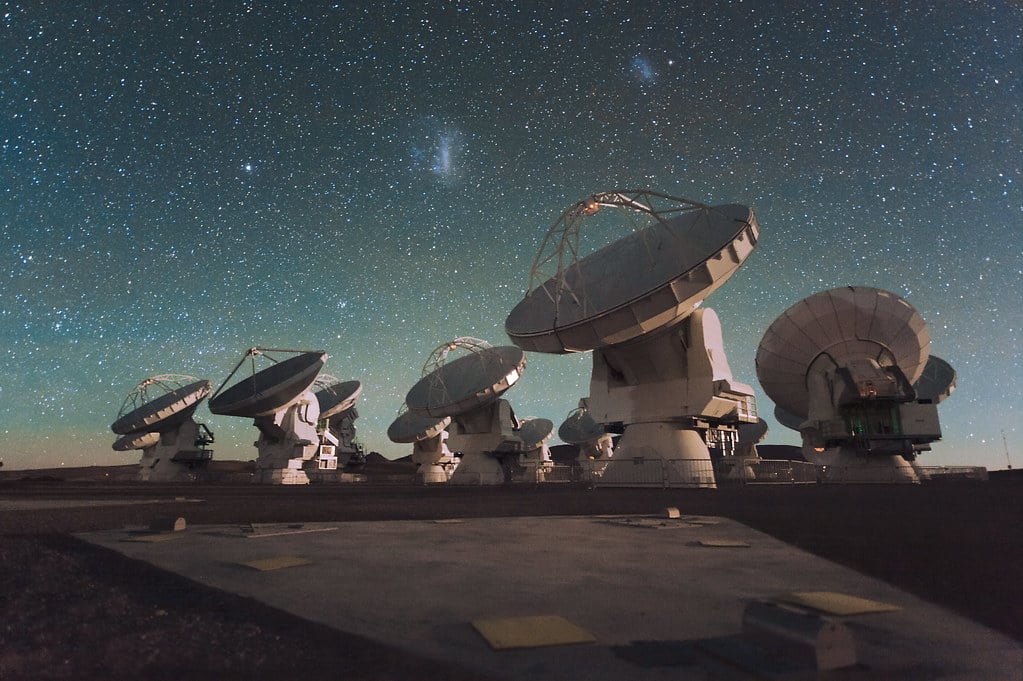
Scientists working with the Atacama Large Millimeter/submillimeter Array (ALMA) in Chile announced recently that they have detected water in a distant galaxy in our universe.
The galaxy, which is known as SPT0311-58, was discovered to not only contain water but also have traces of carbon monoxide. The galaxy is roughly 12.88 billion light years away from Earth’s location in the Milky Way.
The galaxy is thought to be one of the largest galaxies from the early days of our universe, and the discovery of these molecules could provide new information about the life of the universe after the elements were first created.
SPT0311-58 is so large because it is comprised of two galaxies. ALMA scientists initially spotted SPT0311-58 roughly four years ago in 2017, and their observations suggest that the galaxies may be synthesizing into one.
“Using high-resolution ALMA observations of molecular gas in the pair of galaxies known collectively as SPT0311-58 we detected both water and carbon monoxide molecules in the larger of the two galaxies,” said Sreevani Jarugula, who is an astronomer at the University of Illinois and the lead scientist working on the project with ALMA.
“Oxygen and carbon, in particular, are first-generation elements, and in the molecular forms of carbon monoxide and water, they are critical to life as we know it,” said Jarugula.
Jarugula said that “this galaxy is the most massive galaxy currently known at high redshift, or the time when the Universe was still very young.”
“It has more gas and dust compared to other galaxies in the early [universe], which gives us plenty of potential opportunities to observe abundant molecules and to better understand how these life-creating elements impacted the development of the early Universe,” he added.
Water provides new information about the origin of the universe
Water is especially interesting to scientists seeking to better understand the origins of the universe because the molecule is so widespread. Studies often see similarities between the presence of water in the early universe and that of dust.
“The dust absorbs the ultraviolet radiation from the stars in the galaxy and re-emits it as far-infrared photons,” Jarugula explained. “This further excites the water molecules, giving rise to the water emission that scientists are able to observe.”
“In this case, it helped us to detect water emission in this massive galaxy. This correlation could be used to develop water as a tracer of star formation, which could then be applied to galaxies on a cosmological scale,” Sreevani Jarugula said.
According to Jaragula, gaining a more comprehensive understanding of these molecules can be scaled up to provide deep insights into the first days of the universe and the other celestial bodies that exist within it due to their relationship to the composition and fabric of so much of what composes space.
“Studying the gas and dust content of these early galaxies informs us of their properties, such as how many stars are being formed, the rate at which gas is converted into stars, how galaxies interact with each other and with the interstellar medium, and more,” the astronomer said.
See all the latest news from Greece and the world at Greekreporter.com. Contact our newsroom to report an update or send your story, photos and videos. Follow GR on Google News and subscribe here to our daily email!



